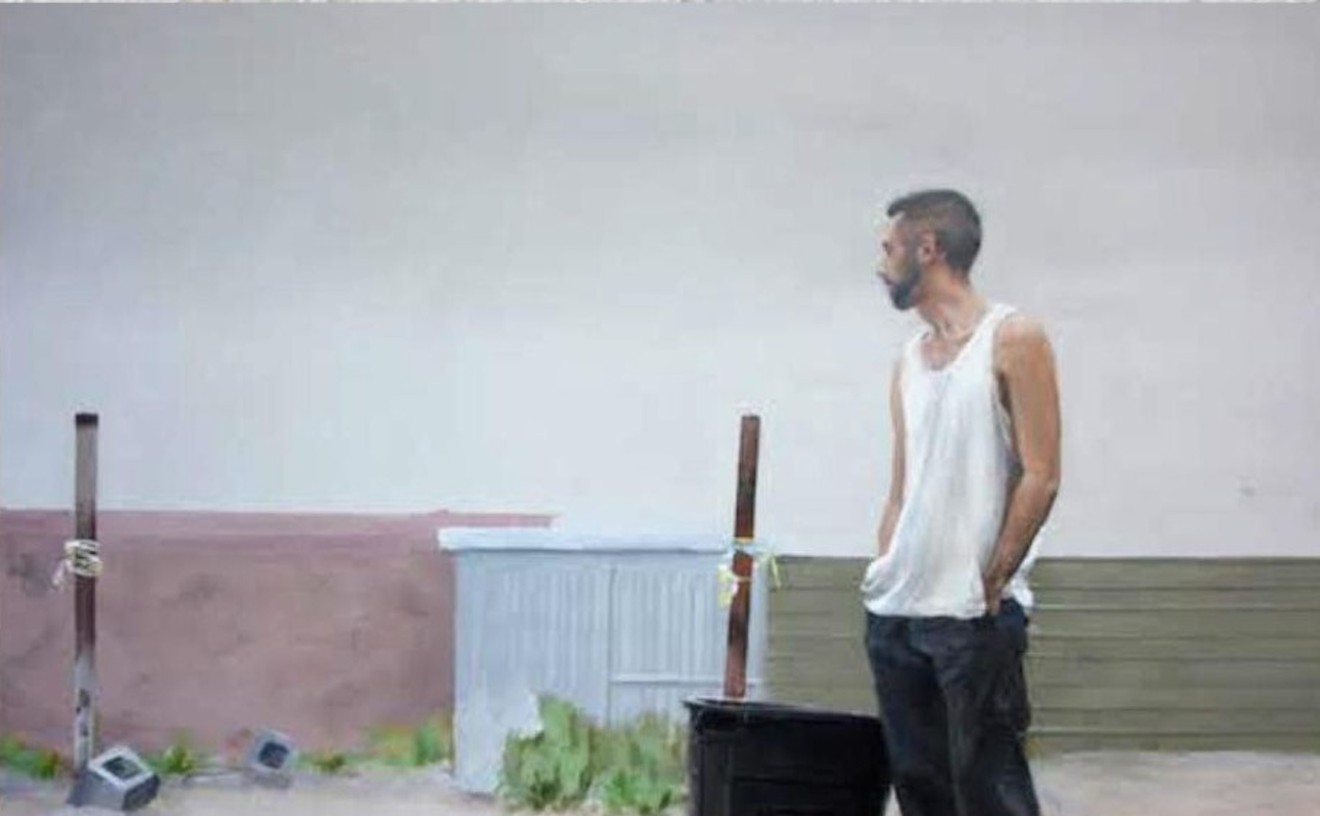The young woman awakens to find herself on a beach. Her name is Maria, and she vaguely recalls that she was here last night with a man named Raul. They were drinking and doing drugs. It is a strange beach with no water. She turns over a rusty sign that reads "Bus Stop" and, looking around, realizes she is no longer in Santa Monica. She finds a woman lying in the sand and approaches her, only to find the body has no pulse. The apparent corpse speaks. Maria smacks the wrist and holds it to her ear as if it's a broken Timex. "Try again," the cadaver urges, extending her arm.
So begins Walking Home, winner of the 20th annual Chicano/Latino Literary Contest, currently being conjured into three dimensions by Planet Earth Multi-Cultural Theatre. Elaine Romero of Tucson was commissioned by Borderlands Theatre to write this play, and the alert Peter James Cirino has brought it to Phoenix for lovers of Southwestern caviar.
Walking Home is a poetic-dream play that centers on the instant during which the spirit of a suicidal woman hovers between life and death. This imagistic drama traces a disenfranchised woman's journey back to life, dramatizing it as an enigmatic trek across a desert from Texas to California. Those of us stranded midway may beat this play to the punch.
The play abounds in beautiful writing, which can grow very restful in the theatre. The dramatic weakness is structural: In order to earn her redemption, Maria must summon her feminine and ethnic heritage to guide her. As a result, the trip is arduous for the audience; we must endure a parade of loquacious characters from Mexican-American history, and a succession of personal stories of oppression as told by colorfully costumed women. None seems to have much relevance to Maria's life-and-death situation. We quickly learn we are going to be subjected to a stream of dramatic narratives, but no action.
The perspective of this female Hispanic playwright reveals a more strident struggle with male oppression than with racial prejudice. It is the gigantic hole in her heart, created by her missing father, that dominates Romero's private agony, and that which constitutes the emotional spine of the play. As she puts it so eloquently: "Men are shit." Her alter ego protests: "Maria!" Our heroine shrugs with resignation. "Well, they are." Some diseases can't be cured.
The evocative set by Christina Lopez is a putty-gray wall which curves around the abstract beach. There are large, irregular shapes cut into this wall that allow the dream characters to appear and desist with dispatch. At times this effect is magical and at other times clumsy. The production features innovative attempts at multimedia interaction, depicting all the men in the various female sagas on a video monitor mounted obtrusively above what is meant to represent a large rock.
Supported by a cast with variable levels of competence, the central players provide the strength of the evening. Anna Luera is appropriately mysterious and commanding as the Woman in the Sand, who eventually emerges as the moribund alter ego to Maria.
The emotional weight of the dramatic event is squarely centered on the protagonist and, with Mary Kay Zeeb as Maria, director Cirino has found a simple, honest actor with surprising emotional depth.
Zeeb is never less than fascinating, an important attribute in a play that requires some semblance of urgency to keep us awake. It is difficult to sustain empathy with a character so clearly in love with her pain. But the tears that flow down her cheeks, as she approaches the long-awaited climax, are wet, and our appreciation for her brave and stalwart imagination is palpable. We are enormously grateful for her integrity. While currently the range of her voice has some limitations, artistic honesty lives in her soul and energizes the performance.
For once, director Cirino has discovered that minimalism can be more effective than excess and, in this outing, his restrained hand reaps rich theatrical rewards. While the videography is crude, it provides a welcome foray into the theatre of the future, blending the live experience with the familiar terrain of television, now as pervasive as dreams.
Despite all the meandering muddle of poetic artiness, the play finally delivers a climactic moment of dramatic power. It's almost worth the wait.--Marshall W. Mason
Walking Home continues through Friday, April 26, at Planet Earth Multi-Cultural Theatre, 909 North Third Street. For more details, see Theatre listing in Thrills.










